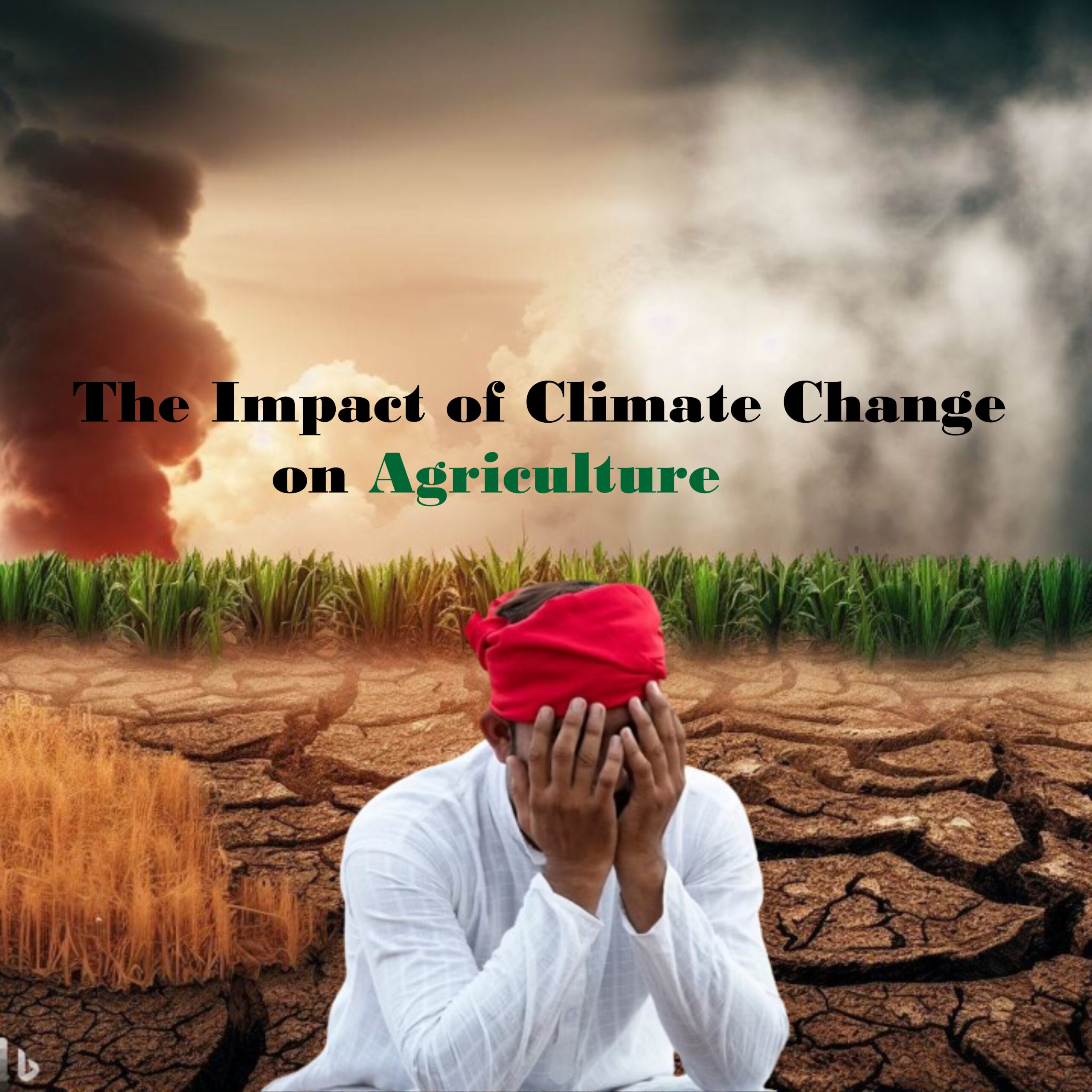
The Impact of Climate Change on Agriculture: An Assessment
Climate change is one of the most pressing challenges of our time and has major implications for people at all levels. One of the biggest impacts is agriculture. In this analysis, we take a closer look at how climate change affects agriculture, exploring the problems farmers face, the steps they are taking in reform, and solutions for the future.
Introduction:
The Intersection of Climate and Agriculture
Agriculture has always been linked to climate and weather conditions. But rapid changes in global climate over the past century have created unprecedented challenges for farmers around the world. From changes in temperature and rainfall patterns to increasing frequency of extreme weather events, agriculture is competing with a new approach that requires a new approach.
Increasing temperatures and changing growing seasons
One of the biggest impacts of climate change on agriculture is global warming. An increase in temperature can cause a change in the growing season, affecting planting and harvesting time. Crops normally suited to a particular temperature will have difficulty adapting, leading to reduced productivity and financial loss for farmers.
In this chapter we examine scientific data from different fields, focusing on the impact of rising temperatures on staple crops such as wheat, rice and corn. We will also examine the impact of global food security and financial constraints on small- and large-scale agriculture.
Adverse weather events: Normal for farmers
Severe weather events such as storms, droughts, floods and fires Floods are becoming more frequent and severe due to climate change. These conditions pose immediate and long-term threats to agriculture, disrupting supply chains, destroying crops and harming farmers.
This section will show specific examples of extreme weather conditions and their effects on agriculture. We will discuss how farmers are adapting to these challenges, from the use of sustainable agriculture to the use of technology for cloud climate and risk management.
Water Scarcity and Irrigation Challenges
Increased evaporation due to changing rainfall patterns and rising temperatures is causing water scarcity in many regions. Agriculture is a water-intensive activity and water use is essential for crop production.
Here we look at the effects of water stress on different crops and fields. We will explore sustainable water use, such as drip irrigation and precision agriculture, to increase water efficiency and reduce the impact of drought on agriculture.
Pest and disease dynamics in a warming world
An increase in temperature can create favorable conditions for the reproduction of pests and diseases that affect crops. Changes in the habitats of pests and changes in the life cycle of the disease lead to new problems for farmers in combating pests.
In this section, the evolution of agricultural pests and diseases in the context of climate change will be analyzed. We will explore integrated pest management strategies, the role of genetic engineering in developing resilient crops, and the importance of biodiversity in natural pest control.
Adaptation and Mitigation Strategies: Leading the Future
Faced with these challenges, farmers, scientists, and policymakers are actively seeking strategies to adapt to climate change and mitigate the effects of climate change on agriculture. This chapter will provide an in-depth look at initiatives and innovations, including:
Climate-Resilient Crop Breeding: Focus efforts to develop weather-resilient crops with a focus on temperature. willing to do.
Precision Agriculture:** Discover how technologies such as sensors, drones and data analytics can be used to optimize resource use, monitor crop health and improve agriculture as a whole.
Climate Smart Agriculture Practices:Discusses permaculture practices that can reduce climate change, such as agroforestry, cover crops and conservation tillage.
Policy implications: Review the role of government policy and international cooperation in supporting farmers and promoting permaculture practices.
Conclusion: For climate-resilient agriculture
In this conclusion, we summarize the findings and discuss the collaborative efforts needed to develop climate-resilient agriculture. We will highlight the importance of collaboration, research and international cooperation by demonstrating the steps that need to be taken to ensure food security and sustainability in the face of ongoing climate change.
By understanding the interaction between climate and agriculture and finding solutions, we can pave the way for a better future for farmers and global food.
ALSO READ
Impact of Climate Change on Agriculture
FOLLOW US ON INSTAGRAM
